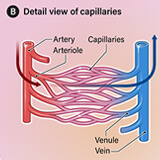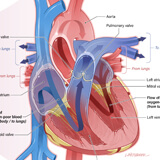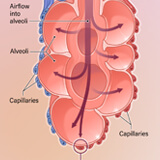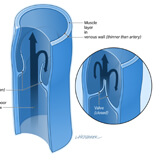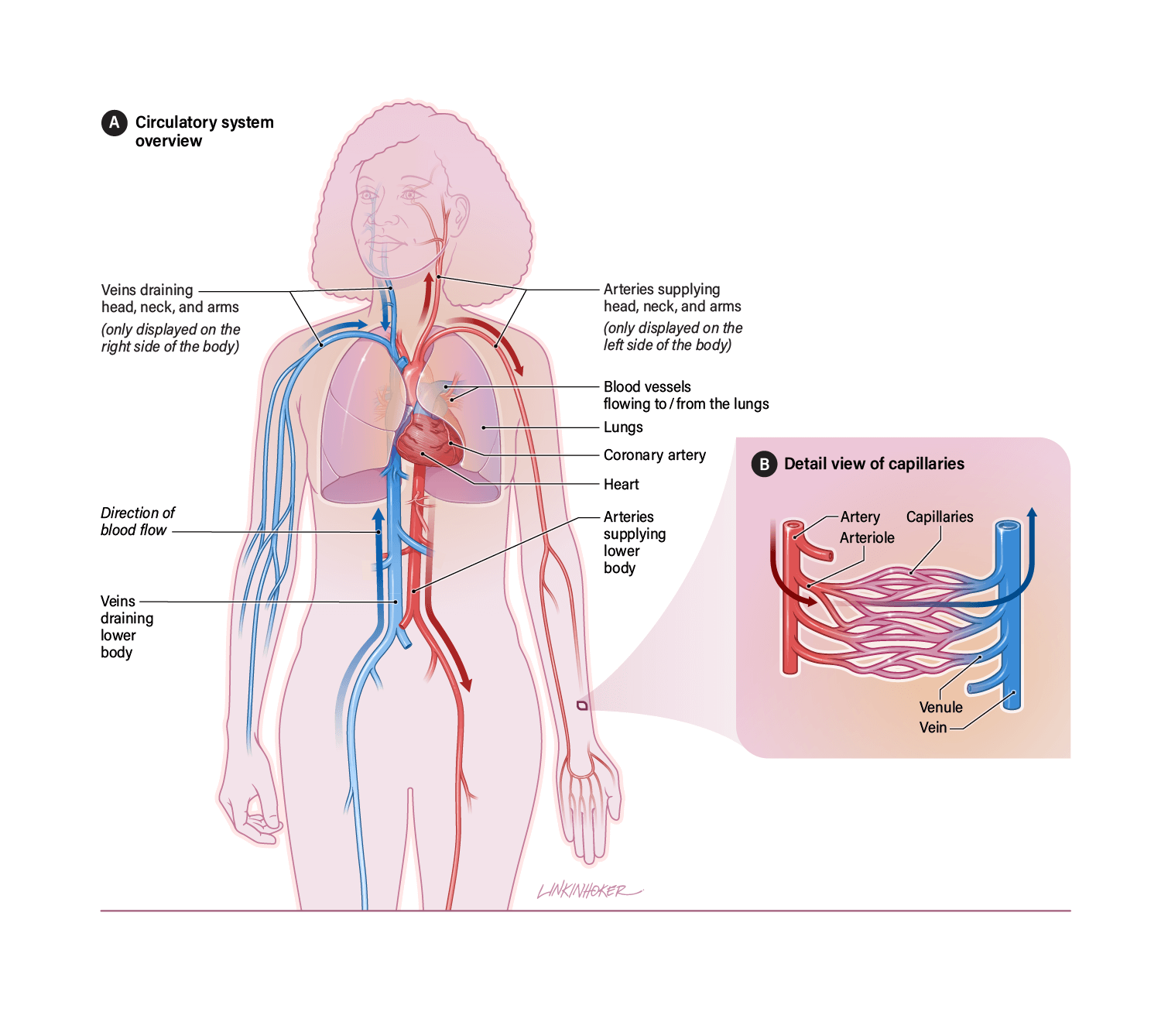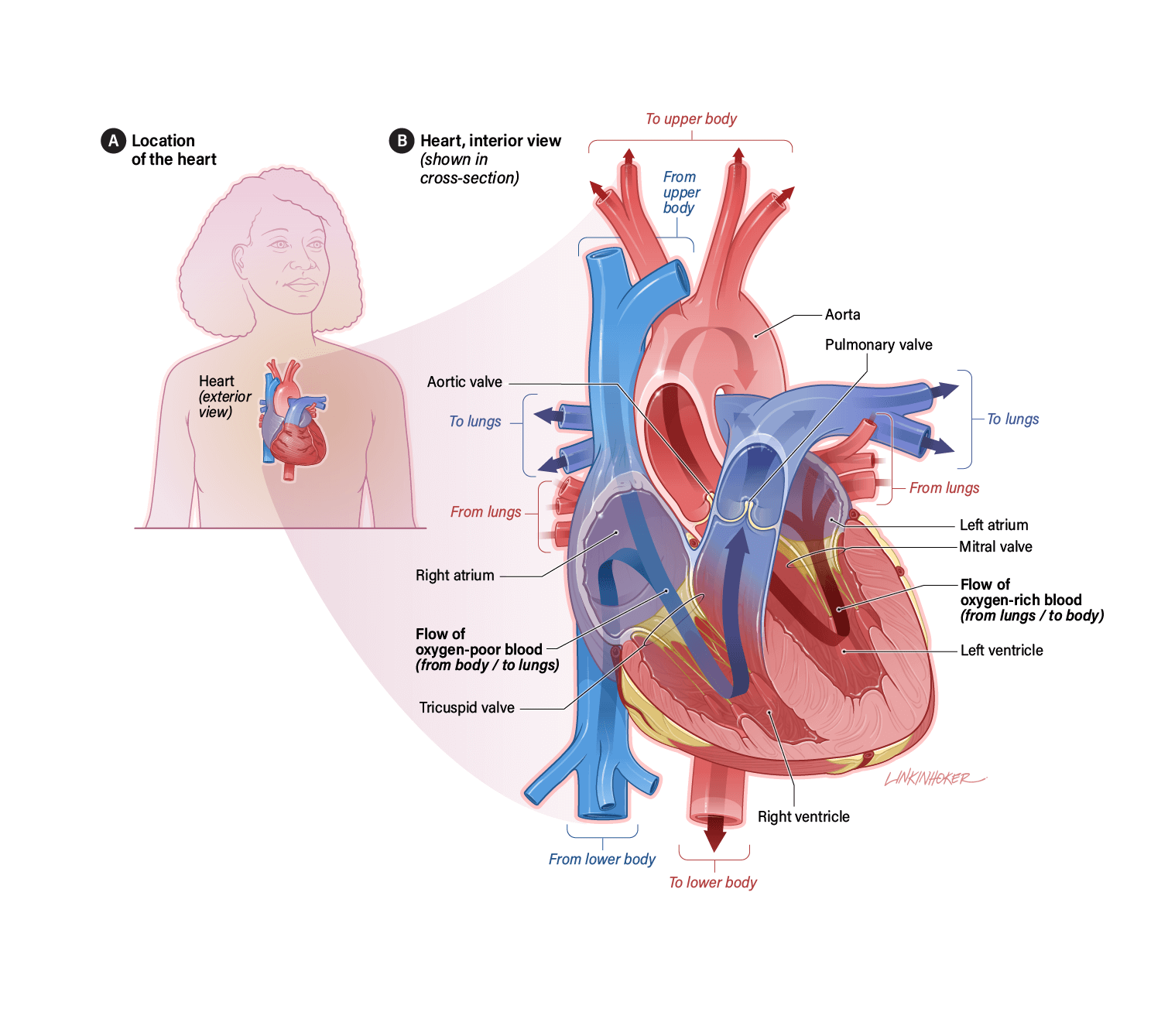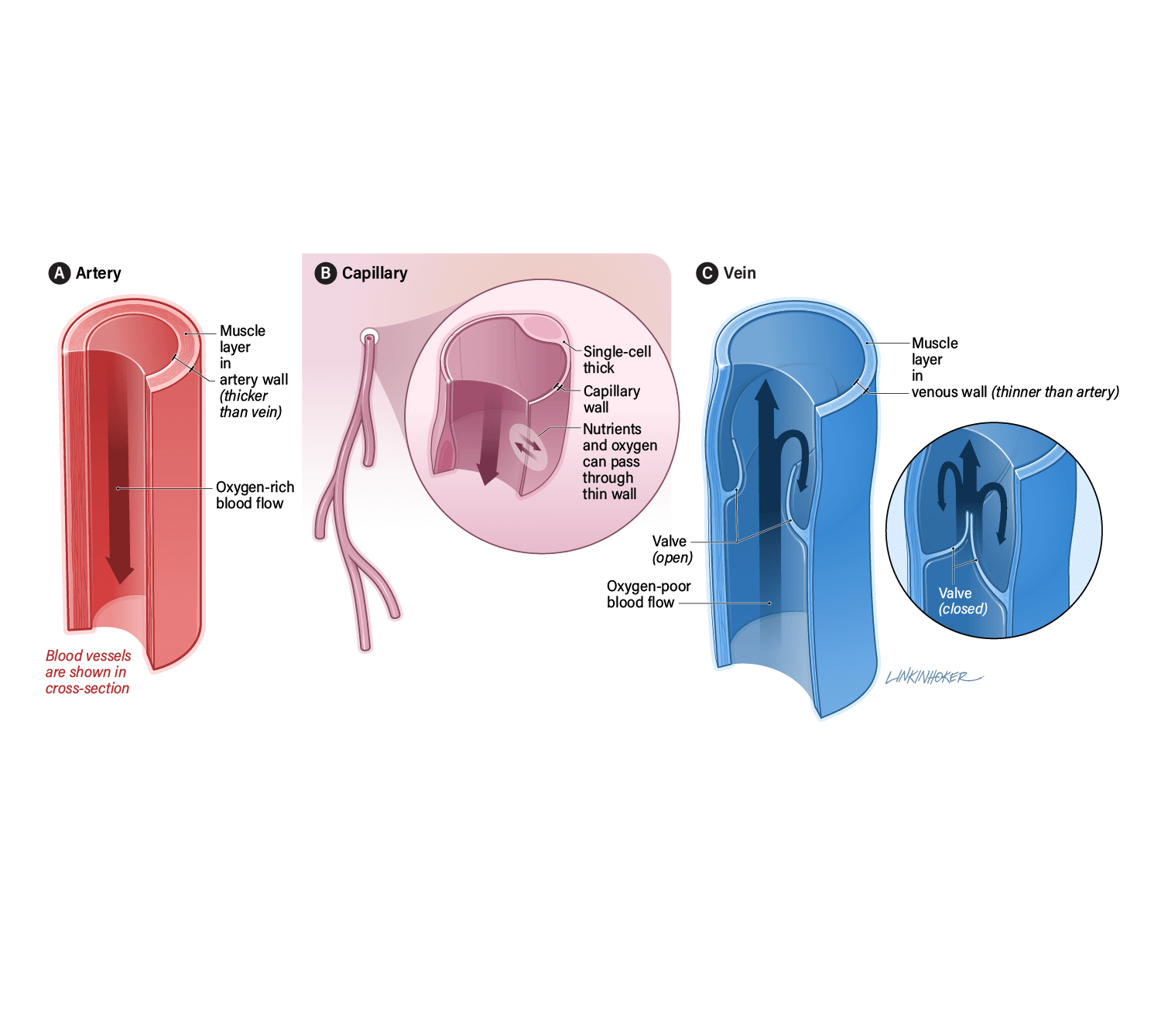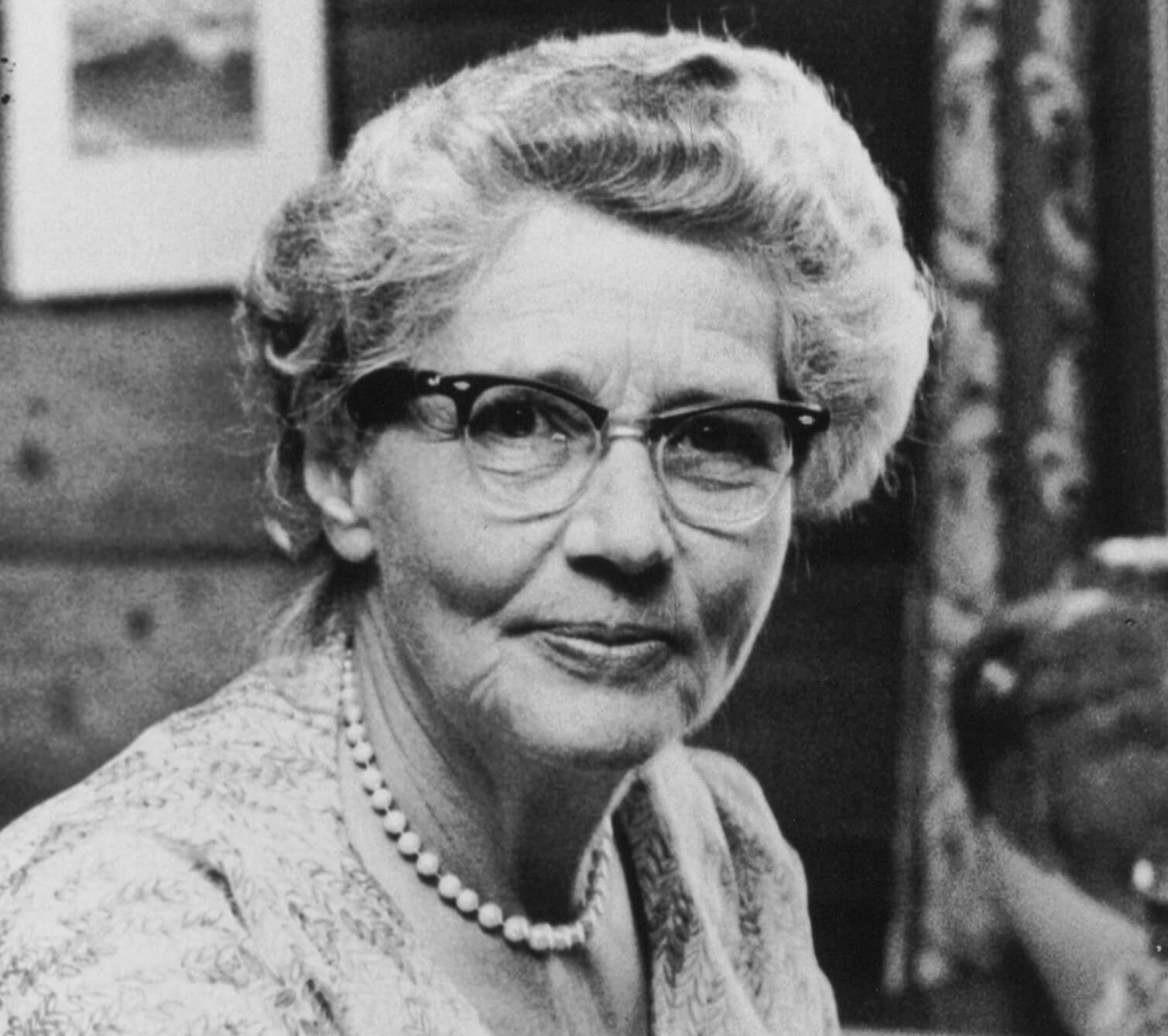Overview
Put your fingers on your wrist. Feel something throbbing just below the surface of your skin? It’s your pulse, letting you know that your heart is working hard.
Learn more about the pulse at https://medlineplus.gov/ency/article/003399.htm
Each time your heart beats, it pumps blood along a network of tubes called blood vessels. This network, along with your heart, is known as the circulatory system, and it reaches every cell in your body. Your blood travels in a never-ending cycle, delivering supplies and taking away wastes. Within your blood, red blood cells have a specialized task. They pick up oxygen in your lungs and carry it to your body’s tissues and organs. Your blood then transports carbon dioxide back to the lungs where you can breathe it out.
-
Heart
Blood circulation begins in the heart.
-
Lungs
Red blood cells pick up oxygen in the lungs.
-
Arteries
Blood travels away from the heart and lungs through the arteries (ar-tuh-reez).
-
Capillaries
Red blood cells drop off oxygen to the cells through tiny tubes called capillaries (cap-ill-air-ies).
-
Veins
Blood then returns to the heart through the veins (vayns) and the cycle begins again.
The Body's Superhighway: Heart
Welcome to the hardest working muscle in your body. Your heart powers the circulatory system. Think of your heart as two pumps, working side by side. One pump receives oxygen-poor blood from your body and pushes it next door to your lungs where it picks up oxygen. The other pump receives oxygen-rich blood back from your lungs and gives it a boost out to your body.
-
Right atrium, Left atrium
The right atrium (ay-tree-um) receives blood that needs to go to the lungs while the left atrium receives blood ready to go out to the body. Together, these pumps are called the atria (ay-tree-uh).
-
Valves
When these valves open, blood is pumped from the two atria (ay-tree-uh), to the ventricles below.
-
Right ventricle, Left ventricle
The right ventricle (ven-trick-ul) pumps oxygen-poor blood to the lungs. At the same time, the left ventricle pumps oxygen-rich blood out to the body.
-
Valves
These valves open to let the ventricles, (ven-trick-ulz), pump blood out to the lungs and body.
The Body's Superhighway: Lungs
Your lungs are specially equipped to do a very important job. Take a deep breath. Your spongy lungs have just filled with air and allowed oxygen to pass into your blood. Now breathe out. Your lungs have worked again—this time letting gasses you don’t need, like carbon dioxide, pass from your blood back out into the air.
-
Trachea
The trachea (tray-kee-uh) is the windpipe that you breathe through.
-
Bronchi
The bronchi (bron-keye) are tubes that transport air from the trachea to each lung. They extend like tree branches into the lung.
-
Bronchioles
The bronchioles (bron-kee-oles) branch out from the bronchi into even smaller tubes.
-
Alveoli
The alveoli (al-vee-oh-lie) are tiny air sacs at the end of the bronchioles (bron-kee-oles). Red blood cells drop off carbon dioxide and pick up fresh oxygen here.
The Body's Superhighway: Blood Vessels
Arteries
Your arteries (ar-tuh-reez) are blood vessels that carry oxygen-rich blood from your heart out to the rest of your body. These muscular tubes have thick strong walls to handle the high pressure of freshly pumped blood. In illustrations arteries are usually colored red because the blood inside of them is bright red—a sign that red blood cells are carrying lots of oxygen.
-
Muscle
Muscle is built into the artery wall.
Capillaries
Your capillaries (cap-ill-air-ies) are tiny blood vessels that distribute blood from your arteries (ar-tuh-reez) to the billions of cells in your body, and then to your veins (vayns). The walls of capillaries are very thin—so thin that nutrients and oxygen can pass right through them. As red blood cells pass through the capillaries, they drop off the oxygen that your cells need to live, and pick up the waste gas, carbon dioxide.
-
Capillary wall
Capillary (cap-ill-air-e) walls are only a single cell thick.
Veins
Veins (vayns) are blood vessels that carry your oxygen-poor blood back to the heart. This is a pretty difficult job. When blood flows to your toes, it’s a downhill ride. Getting the blood back up to your heart is a little harder. The veins in your arms and legs have little flap-like valves that help prevent blood from flowing backwards.
-
Muscle
The muscle in the vein wall is much thinner than the muscle in the artery (ar-tuh-re) wall.
-
Valve
Veins (vayns) in the arms and legs have valves that help blood to keep moving forward.
A Doctor Making a Difference
Helen Brooke Taussig was a frail child who suffered from the learning problem, dyslexia (dis-lex-ee-uh). When she grew older, she also lost her hearing. Nevertheless, she beat the odds to become a doctor and make an important medical discovery. Dr. Taussig worked with “blue babies,” whose color at birth indicated that they were not getting enough oxygen. Some of these babies died immediately. Others only lived a few years.
Dr. Taussig discovered that these babies had poor blood flow between their hearts and lungs. She worked with Dr. Alfred Blalock and his brilliant technician, Vivien Thomas, and developed a new heart operation for “blue babies.” In 1944 they had their first success. Since then, the lives of many children have been saved.



